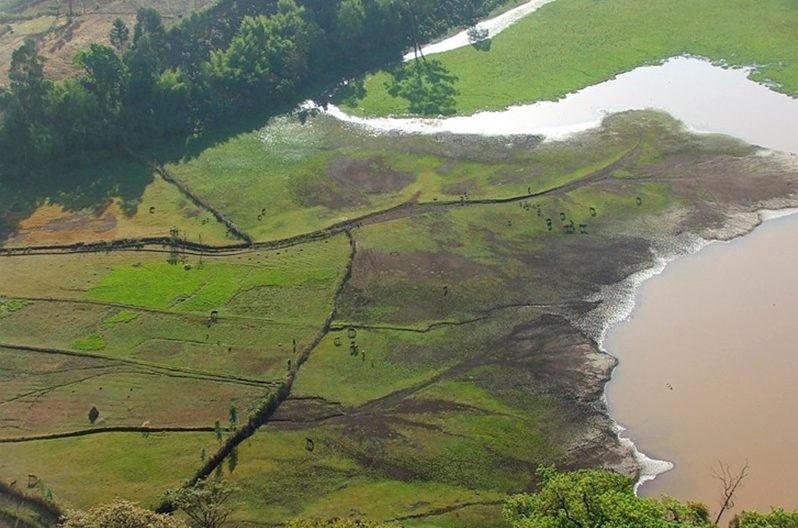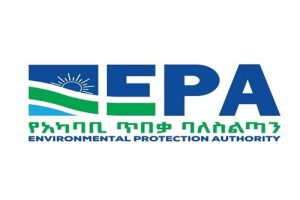
Wetlands are areas where land meets water, typically six meters or less according to the Ramsar Convention on Wetlands. These areas play a vital role in water storage, regulation, and purification, often referred to as the “kidneys of the earth.”
Despite their importance, wetlands are often misunderstood and undervalued, leading to their degradation and destruction.
In East Africa, wetlands play a crucial role in mitigating the impacts of recurrent droughts and floods. By storing and slowly releasing water, wetlands serve as lifelines for pastoralists and other communities, helping to reduce the severity of droughts and floods. However, the increasing frequency and intensity of climate change-related events pose a significant threat to wetlands and the communities that depend on them.
Wetlands International, a global NGO based in the Netherlands, is focusing on the conservation and restoration of wetlands. With years of experience in the field, it has been actively engaged in Ethiopia for the past five years, working on various programs ranging from policy issues, education, community involvement, wetland restoration, livelihood support, and facilitating consensus among stakeholders on critical wetland issues.
The Convention on Wetlands is the intergovernmental treaty that provides the framework for the conservation and wise use of wetlands and their resources. The Convention was adopted in the Iranian city of Ramsar in 1971 and came into force in 1975.
Its mission covers the wise use of wetlands for their ecosystems and also their water resources. The Convention therefore works particularly closely with the six other biodiversity-related Conventions, and with those concerned with water governance.
The Convention has devoted a great deal of effort to developing synergies with these other environment-related instrument. There are several countries who are party to this convention, including most countries in Eastern Africa, though Ethiopia is yet to become party to the Ramzar Convention. Indeed, they are still working on it.
“Through our work in East African countries, we have witnessed several best practices in wetland protection and management. Countries like Uganda have implemented robust wetland policies and management plans, emphasizing the importance of community engagement, livelihood support, and capacity building,” In response to flooding and water management challenges, East African countries must adopt proactive measures, such as early warning systems, integrated water resource management approaches, and stakeholder engagement. By incorporating scientific knowledge, policy frameworks, and community participation, governments can better prepare for and mitigate the impacts of floods and water-related disasters.
The Ethiopian government’s tree planting initiatives have the potential to contribute to wetland conservation by enhancing soil stability, reducing erosion, and providing habitat for biodiversity. However, the success of these efforts depends on careful species selection, community involvement and long-term monitoring to ensure the survival and growth of planted trees.
Raising awareness, fostering collaboration, and adopting sustainable practices are essential for safeguarding wetlands in East Africa. By recognizing the value of wetlands, integrating climate change considerations, and engaging diverse stakeholders, we can work together to protect these vital ecosystems for future generations.
These initiatives have led to tangible improvements in wetland conservation and restoration efforts, showcasing the positive impact of integrated approaches to wetland management.
Challenges in expanding our programs in East Africa include establishing partnerships, navigating diverse regulatory environments, and ensuring effective community engagement. Building trust, capacity, and awareness among stakeholders is essential for the successful implementation of wetland conservation initiatives.
Climate change poses a significant threat to wetlands, affecting water levels, biodiversity, and ecosystem functions. As temperatures rise and rainfall patterns shift, wetlands face increased pressure from floods, droughts, and habitat degradation. Addressing these challenges requires a holistic approach that integrates climate change adaptation strategies into wetland conservation and management efforts.
In response to flooding and water management challenges, East African countries must adopt proactive measures, such as early warning systems, integrated water resource management approaches, and stakeholder engagement. By incorporating scientific knowledge, policy frameworks, and community participation, governments can better prepare for and mitigate the impacts of floods and water-related disasters.
The Ethiopian government’s tree planting initiatives have the potential to contribute to wetland conservation by enhancing soil stability, reducing erosion, and providing habitat for biodiversity. However, the success of these efforts depends on careful species selection, community involvement and long-term monitoring to ensure the survival and growth of planted trees.
Raising awareness, fostering collaboration, and adopting sustainable practices are essential for safeguarding wetlands in East Africa. By recognizing the value of wetlands, integrating climate change considerations, and engaging diverse stakeholders, we can work together to protect these vital ecosystems for future generations.
East African countries should give due attention for wetlands conservation and deliberate on the matter so as to mitigating impacts of recurrent droughts and floods, Wetlands International Eastern Africa CEO Julie Mulonga said. Considering wetlands significance for mitigating the impacts of recurrent droughts and floods, east African countries, which are exposed to recurrent drought and flooding, should deliberate on ways of conserving wetlands, she suggested.
The Ethiopian Environmental Protection Authority (EEPA) announced that it is developing a policy and proclamation that ensure proper protection and utilization of wetlands in Ethiopia.
Researchers in the sector have been revealing the growing concerns about the impact of farming, grazing, and other activities on the country’s wetlands. Wetlands, including lakes, rivers, and springs play a crucial role in regulating water resources and maintaining the ecological balance of the environment.
Experts in the field have repeatedly called for a robust legal framework to safeguard wetlands from threats and implement sustainable management practices.
Zerihun Mengesha is currently working as Water Bodies and Wetlands Management, Monitoring, and Control Desk Head at EEPA. He noted the importance of wetlands as guarantor of water resource development and sustainability. Wetlands not only protect domestic water supplies but also play a vital role in the flow of trans-boundary rivers.
The EEPA is currently drafting a policy and decree to address the management and regulation of wetlands. The legal frameworks are expected to help prevent pollution and degradation of water bodies caused by depletion and damage of wetlands and the broader ecosystem.
Ethiopia’s efforts in environmental protection and development, including the Green Legacy initiative, will play significant role in safeguarding wetlands and ensuring the sustainable flow of trans-boundary Rivers.
Furthermore, regional cooperation and support will be crucial for sustainable development of watersheds and the protection of water resources as Ethiopia is a source of water for neighboring countries. Following the rules and regulations which will be enacted soon, all the concerned bodies are expected to indulge invest on wetland conservation so as to conserve wetlands.
BY GIRMACHEW GASHAW
The Ethiopian herald May 15/2024




